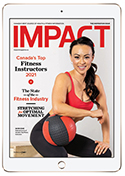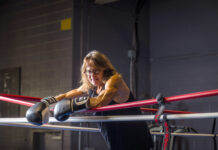It’s a new year — a time traditionally when we make those New Year’s resolutions to get fitter, eat better, stay healthier. Gyms and fitness facilities usually see a spike in memberships about now, but not this year. The fitness industry is still reeling from the Coronavirus, some facilities hanging on by a thread but many having to close their doors.
The summer of 2020 saw some hope for the industry as many were able to operate albeit with reduced class sizes. But then the second wave came in the fall and provinces again started to lock down the industry. Some are able to operate with one-on-one clients while others are having to close and revert to 100 per cent online.
This happened to GYMVMT in Calgary who despite having zero COVID cases from June to November had to close its doors along with other Alberta clubs in December. “While our clubs have been closed, we have been fortunate enough to quickly shift our offerings entirely to virtual services,” says Scott Wildeman, Senior VP Fitness and Operations. They offer an array of classes online through their streaming platform, GYMVMT GO, including Zumba, HIIT, Yoga, Cycle and Barre.
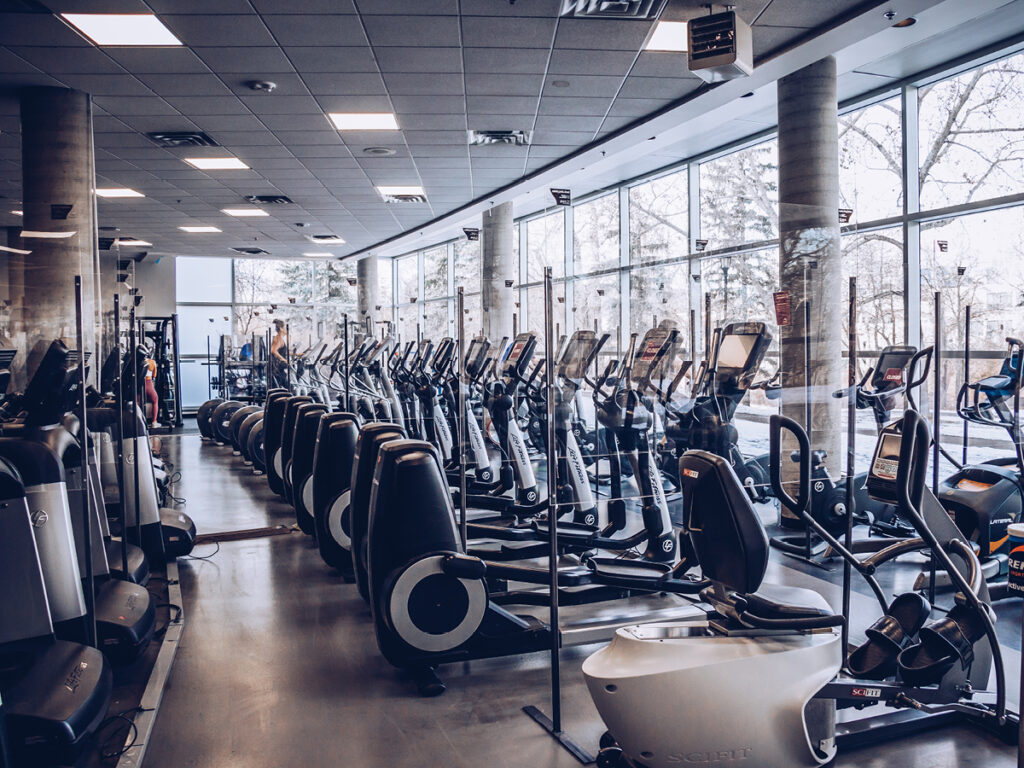
“I have never, ever witnessed anything like the pandemic of 2020. In the almost 32 years that I have owned One On One Personal Fitness, we have always been a brick and mortar location,” says Calgary’s Sandra Bueckert, who although pivoted online during the first wave in March 2020, misses the personal connection with clients. “We realize that human interaction is not something that can be easily replaced.”
During the late summer and early fall, offering outdoor classes was a saviour for Rosalie Brown at her club in Richmond Hill, Ontario. “We taught five outdoor classes well into November 2020, then when the snow hit, I offered Zoom classes five days a week. I also recorded 50-plus YouTube classes for anyone who could not attend outdoor or Zoom classes.”
Rafal Matuszewski, Director of Education for Ora Fitness and Yoga in Surrey, B.C. adapted very quickly and efficiently to the never-ending openings and closures. During the first wave of the pandemic they went totally online and had live Zoom classes. “When we reopened we had both online and in-person options for our members which I think really made the difference. We started to see many of our members come back and we started to see our business flourish once again.” But then in the fall many B.C. gyms in the Lower Mainland received closure notices because of the spike in COVID cases. Hot yoga and spin classes were particularly affected.
“We were shut down for an entire two weeks before we were given the green light to reopen, but once again with more restrictions. We had to cut our class sizes by another 25 per cent, and on top of that, with the current gym restrictions not being able to have ‘high intensity’ classes which when you also have a spin studio, doesn’t work out too well,” he adds.
“We know how resilient, strong, adaptable and creative the fitness industry and its members can be.”
Mo Hagan – COO of canfitpro
But Matuszewski is resilient: “With all the speed bumps we’ve had along the way, we have a high standard for our COVID protocols and we are ready to continue to adapt to whatever the future holds.”
With clubs offering more personal training options, many found that the retention rate upon re-opening was high. Curtis Christopherson, CEO & President of Innovative Fitness in Vancouver said that on re-opening in the summer, over 55 per cent expressed an interest in continuing their virtual personal training sessions. This hasn’t waned: “Personal training is going really well. Some of our locations are way ahead of where we were before COVID – so we are pivoting well.”
For smaller studios that don’t rely on group classes the uptake in personal training was a natural progression. They also haven’t been affected as much, says Brent Bishop, founder of Think Fitness Studios in Toronto. “We were virtually unaffected due to the fact that we did not rely on large numbers of members in the facility at one time. We reduced the sizes of our classes to fit the government regulations but also heavily focussed on regaining momentum with our core business: personal training.” This included setting up separate training pods, each with its own equipment, and reducing sessions from one hour to 50 minutes to allow for thorough cleaning.
Larger fitness centres that are community hubs offering sport leagues and outreach services have been gravely affected by the lockdowns. Many, such as the Genesis Centre in Calgary, haven’t been able to host events or gatherings for nearly a year, which is the heart of their business.
The Repsol Centre in Calgary is temporarily closed and has had to lay off staff. However, the January 29 announcement by the Alberta Government that fitness centres can re-open in a limited capacity has the Centre re-envisioning which services they can offer. This will likely include personal one-on-one training in fitness and aquatics. Once they ascertain customer demands they see a partial re-opening shortly thereafter. In the meantime they are offering a moving challenge during February, Zoom cycling sessions and at-home workouts.

The Richmond Oval had a membership base of 5,700 pre-COVID and now operates at 25 per cent of that. But they pivoted well, says general manager Gerry De Cicco. “We completely transformed our delivery model and leaned on our most-important assets – the Oval’s massive footprint and an engaged and creative team of staff.” In the summer they moved all group fitness classes out of the studios and into a 10,000 sq. ft. court. When B.C.’s Ministry of Health imposed further restrictions in November, the Oval was able to retain some services such as skating and personal training as well as some national team programs. “As operators, we are most appreciative of our members and guests who have stayed with us.”
The Pacific Institute for Sport Excellence (PISE) in Victoria, B.C. has taken advantage of the time it was closed including investing in equipment and safety measures, says CEO Robert Bettauer. “We also completed a major renovation of the gymnasium and our front entrance which will provide an enhanced training and programming environment for the community when they can enjoy PISE again.”
Re-thinking the future
It is the future that facilities are looking forward to when they can re-open and hopefully resume their normal service. But what will that look like? And will it be business as usual? The consensus is no – the industry has been rocked by the pandemic and things will never be the same again.
There will always be a sector of the public who will resume their exercise regimen, but others might have reservations about returning and will expect that certain protocols will remain in place. In many ways the industry is on a tightrope, trying to keep that balance and clients happy but also having the fear of losing them.
Mo Hagan, COO with Canada’s largest fitness education provider, canfitpro, understands the uncertainty in the industry. “Fitness professionals continue to endure unprecedented challenges that require entirely new ways of operating their businesses and servicing members. The need for community, connection and credibility has never been greater.”
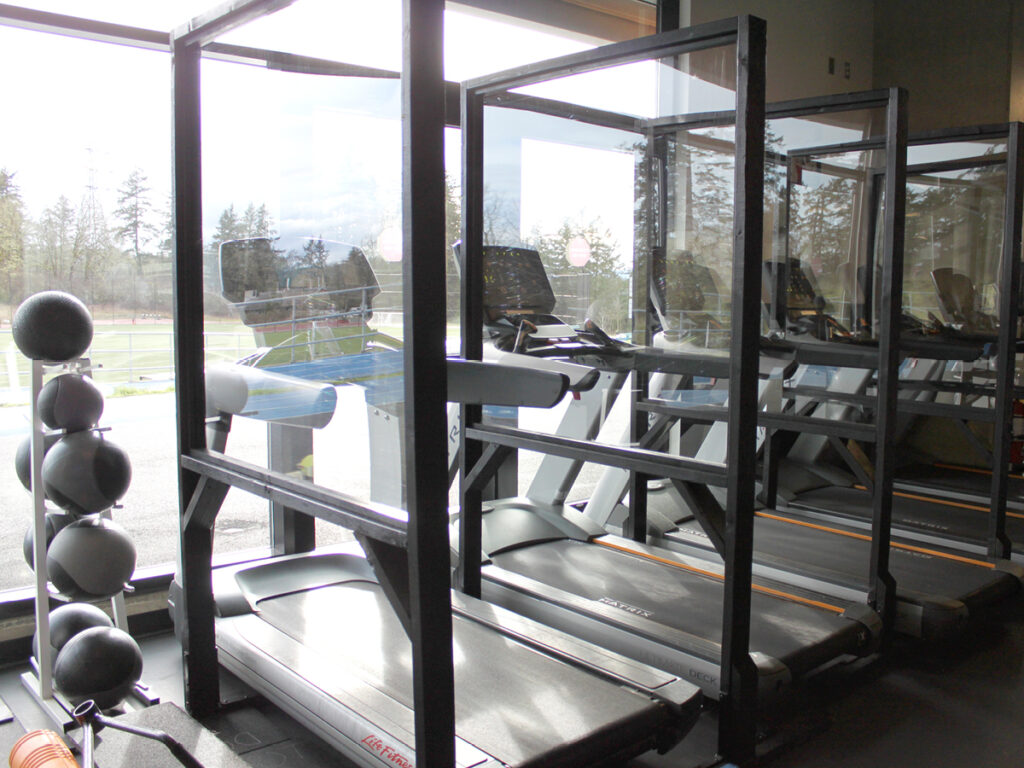
Matuszewski feels that even though we all want to go back to some sort of normality, everyone – clubs and the general public alike – will be cautious at first. “We will most likely keep things as they are now and slowly open up more workout pods in each room, continue having our staff wear masks, keep up with hand hygiene and slowly peel away those layers once the entire world stabilizes. My advice for anyone looking to sign up for a gym, yoga, or spin is to not only ask about what services they offer but what COVID protocols they’ve implemented and also be shown those in practice.”
At Think Fitness, Bishop will heed to his client’s needs. “If some members want to continue with virtual training for a while longer and gradually progress back into ‘in-person’ sessions then we will play our part in allowing for this progressive adaptation back to the training floor.”
It is the mix of in-person and virtual that is predicted by many in the industry. We have got used to the Zoom sessions in the comfort of our homes and there may be a reluctance to go back to a studio with 20-30 bodies closeted in one room.
“We realize that human interaction is not something that can be easily replaced.”
Sandra Bueckert – Owner of One On One Personal Fitness
When restrictions are lifted De Cicco is looking forward to the return of high-intensity classes and hot yoga at the Richmond Oval, but they will retain a booking system for some activities rather than offering drop in.
Bueckert is realistic about the future and sees her offering a mix of in-studio and online coaching. Hannah Fletcher, lifestyle, fitness and nutrition coach based in Vancouver concurs: “I believe most personal trainers and studios will continue to have hybrid models where some sessions are in-person, and others are video calls.” Christopherson sees the future as a blend also but one where micro-gyms will merge to offer more one-on-one training.
Community Support
One thing is clear – safety protocols and hygiene will remain. “Once we can offer programs and sports back into the community, we will continue to follow the highest level of safety and cleanliness protocols to ensure the health and safety of our team and the public,” says Sherry King, Executive Director of the Genesis Centre.
Community support for the industry is crucial, says King: “We need the community to know that we are all in this together. We need to work together with empathy and compassion, being kind to one another now and always.” The public also needs to know that gyms are safe, says Christopherson. “We are not the environment that spreads COVID in the way people might think.”
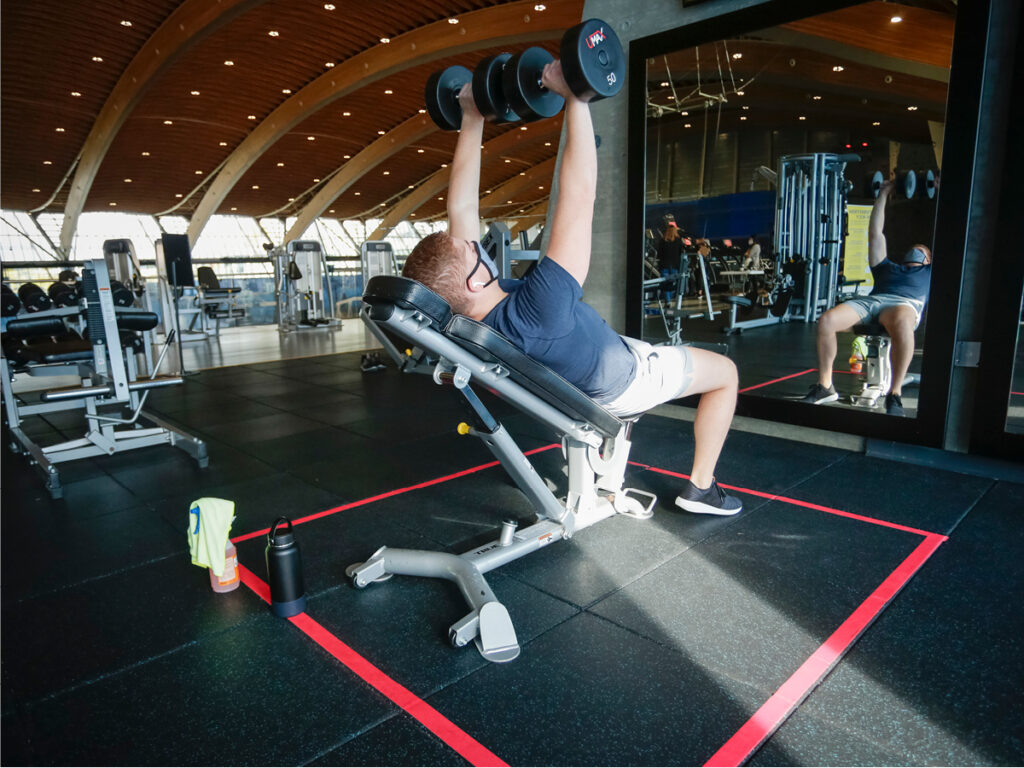
Sharing a positive personal training experience or an awesome on-line workout is one way the public can help in supporting the industry. People can also be pro-active, says Wildeman. “Please put pressure on our elected government officials to reopen indoor fitness facilities. Many Albertans have been misinformed to believe that gyms opened on February 8. Gyms can only be open for private personal training sessions by appointment. For many, it is not feasible to open and only provide these services.”
Supporting fitness professionals is also a key factor for the future of the industry which is where canfitpro can help. “We know how resilient, strong, adaptable and creative the fitness industry and its members can be. This inspired us at canfitpro to revolutionize our business and reinvent how we delivered training and educational experiences so that we could help fitness professionals remain certified, relevant, elevate their credentials and innovate the ways in which they could help their clients,” says Hagan.
As COVID restrictions continue everyone is feeling the strain but fitness leaders know that maintaining a healthy lifestyle has many positive benefits. “The research is clear that beyond the obvious positive physical impact, there are also strong psychological effects such as boosting mood, reducing anxiety and the effects of depression,” says Bishop, who like many facilities are frustrated that they are being treated as a non-essential service.
“We realized that through speaking and working with our clients daily that we are an essential mental health service,” says Bueckert. “We know that serotonin (the feel good neurotransmitter) is elevated with exercise. Fitness needs to be embraced by our politicians and health care providers as an essential service.”
“The research is clear that beyond the obvious positive physical impact, there are also strong psychological effects such as boosting mood.”
Brent Bishop – owner of Think Fitness Studios
The fitness industry is voicing concern about its plight. The Fitness Industry Council of Canada (FIC), which has 6,000 members and employs over 150,000 people, has a coalition of provincial chapters across the country that meets via Zoom every two weeks to exchange news and information. Recently Sara Hodson, FIC BC Coalition co-leader connected with Deputy Prime Minister and Finance Minister, Chrystia Freeland to discuss what support the government can give the fitness industry. Hodson specifically asked if fitness memberships and services could be included as a medical cost on personal taxes. Freeland was very receptive to the idea and will be considering the request. The Prescription to Get Active program, that is currently in Alberta, Manitoba and Ontario, will be expanded across Canada to align with the new tax initiative. The FIC Alberta Coalition has a campaign on www.savefitness.ca and is encouraging members and the community to support them on social media with the hash tag #savefitnessAB.
For many clubs this has all come too late. Some data has shown that 25 per cent of gyms will close in the first half of 2021. The industry has seen closures such as the Eau Claire YMCA in Calgary, Oak Bay Fitness in Victoria, Barre Belle in Calgary and Vancouver and Bolo in Toronto to name a few.
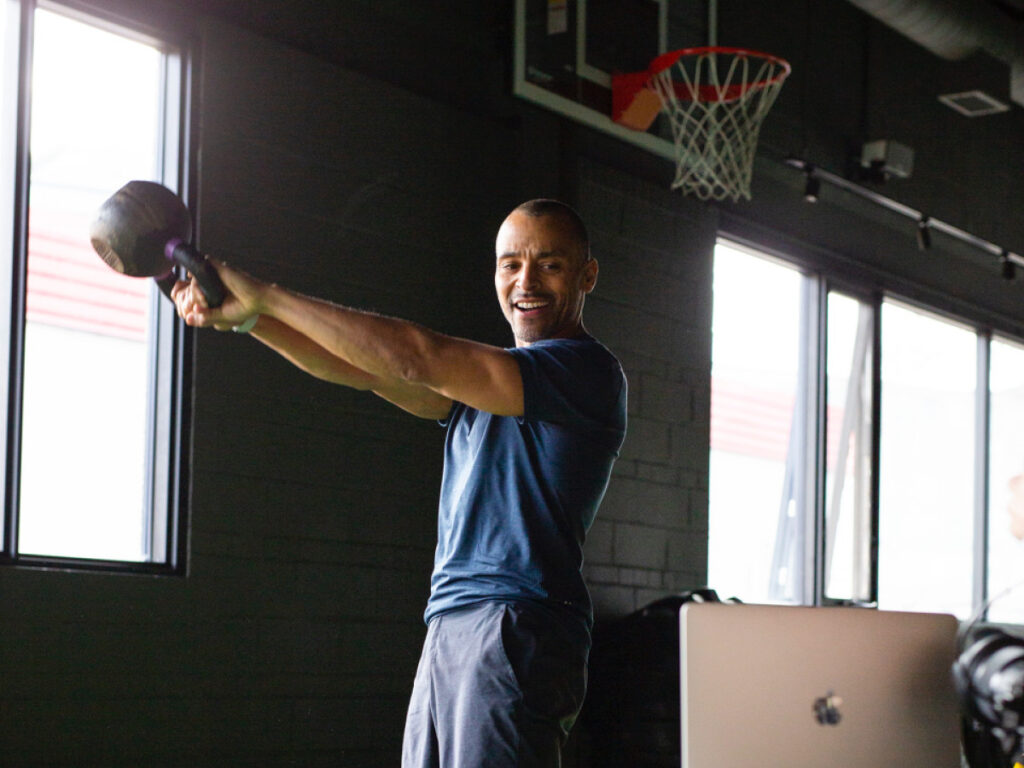
With all of the provinces in some kind of lock-down it is evident that something has to be done and soon. Communicating that gyms are not the super-spreaders of the virus is one of the key messages to get out. Facilities all over the country have gone over and above their provincial orders to ensure they have a safe and clean environment for their clients and staff.
“It is really important to communicate that well-operated sport and fitness facilities continue to be safe for the community, and that a healthy population is a key driver in fighting illness,” says De Cicco.
While the industry is facing a grave future owners and operators are thankful for the support of its members, in-person and online. “We are so grateful for those who are supporting us during this pandemic, and we want to be here to continue supporting you in your fitness journey,” says Wildeman.
Read this story in the digital edition of IMPACT Magazine.
IMPACT Magazine’s 2021 Inspiration Issue
Read about our 2021 Canada’s Top Fitness Instructors – our top 30 from across Canada! Go beyond traditional thinking to optimize movement through stretching, find out about 7 DIY hacks to improve the air quality in your home, learn about taking care of your heart through proper nutrition, enjoy some of our best plant-based recipes yet, and work out with our Canada’s Top Fitness Trainers!



